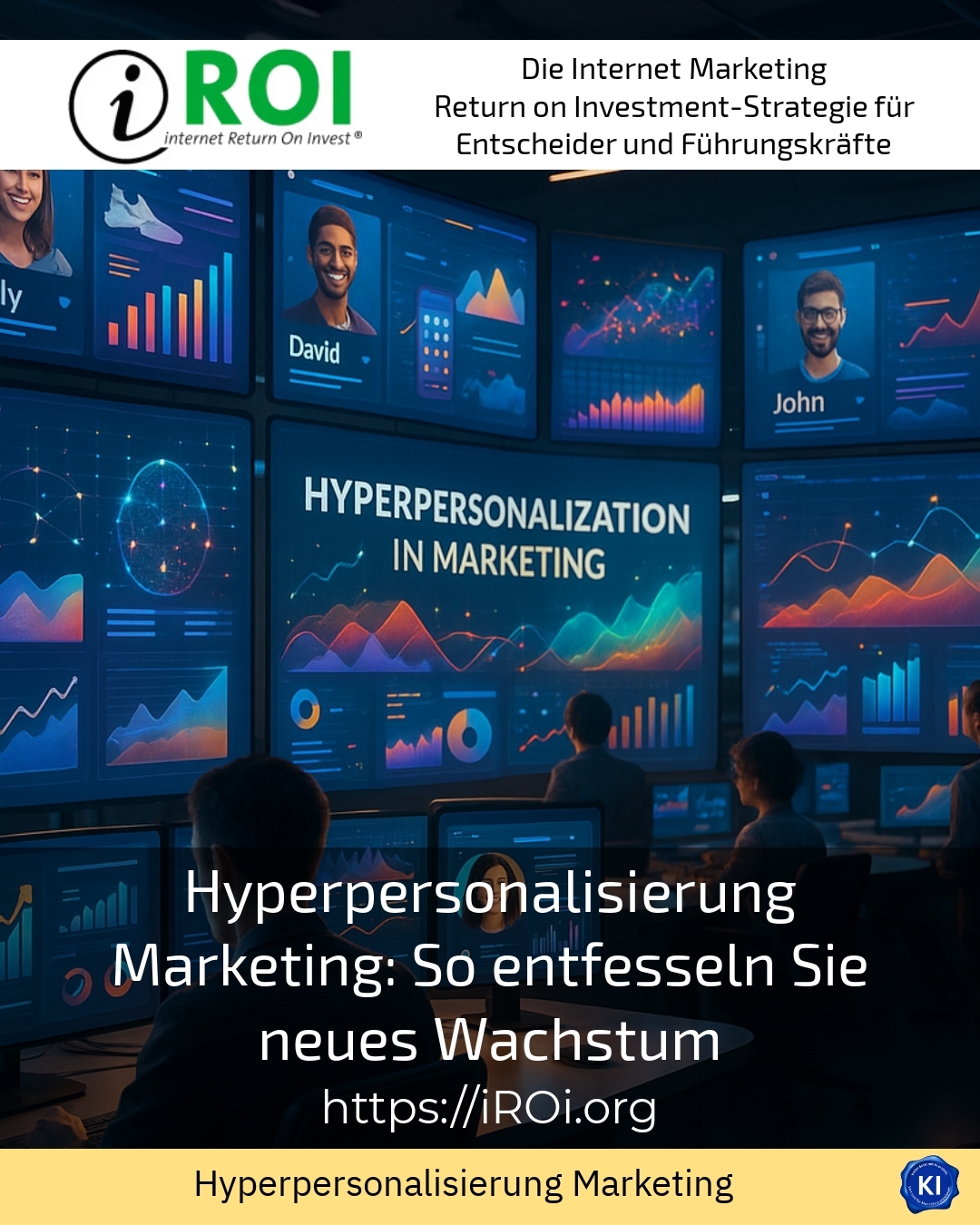Hyper-personalised marketing enables companies to significantly strengthen their customer relationships through customised experiences. Careful data analysis and artificial intelligence can be used to generate individualised approaches and offers that are tailored to the specific interests and preferences of customers. This method can lead to a significant increase in customer satisfaction and loyalty, which in turn has a positive impact on sales [1][2].
The basics of hyperpersonalisation
Hyperpersonalisation is based on the collection and analysis of large amounts of data in order to describe customers according to their profile. These profiles make it possible to develop targeted marketing measures that appeal directly to the individual. For example, hyper-personalisation can be used to create dynamic websites that adapt to the location or user behaviour [1].
Examples from practice
An excellent example is Netflix, which customises its user interface to users' preferences. The platform uses thumbnails that are tailored to each user's interests [3][11]. Similarly, Spotify uses hyper-personalisation to create daily and weekly playlists tailored to users' music preferences [9][11].
BEST PRACTICE with a customer (name hidden due to NDA contract): A fashion company used hyper-personalisation to recommend targeted fashion collections to customers based on their buying behaviour and fashion preferences. This strategy led to a considerable increase in sales figures.
Hyperpersonalisation in hyperpersonalisation marketing
In the context of hyper-personalised marketing, the aim is to provide customers with tailored experiences. This can be done through intelligent chatbots, dynamic ads or personalised loyalty programmes. Starbucks, for example, uses its loyalty programme to send customers personalised offers based on their preferences and purchasing behaviour [3][9].
Advantages and challenges
Hyper-personalisation offers numerous advantages, including an increase in customer loyalty and sales. However, it also requires effective data management and compliance with data protection regulations. Companies such as Amazon and Netflix are successfully demonstrating how hyper-personalisation can be used to increase customer satisfaction [3][9].
BEST PRACTICE with a customer (name hidden due to NDA contract): A company in the hair care sector used hyper-personalisation to recommend individual products to customers that were tailored to their specific needs. This led to a significant increase in customer satisfaction and loyalty.
Practical application and coaching
To be successful in practice, companies often need external support. iROI coaching can help to strategically plan and implement hyper-personalisation marketing projects. This includes the analysis of customer behaviour data and the development of targeted marketing strategies to strengthen customer loyalty and increase sales.
My analysis
Hyper-personalisation marketing is a powerful tool that can significantly strengthen companies against the competition. By combining data analysis and personalised customer communication, retailers and service providers can achieve decisive advantages. Examples such as Netflix and Spotify clearly show that hyper-personalisation can lead to an increase in customer satisfaction and ultimately sales.
Through the targeted adaptation of marketing strategies and the consideration of individual customer interests, hyper-personalisation marketing supports companies in deepening their relationships with customers and thus achieving long-term success.
Further links from the text above:
What is hyper-personalisation?
The power of hyper-personalisation
Hyper-personalisation for greater customer satisfaction
For more information and if you have any questions, please contact Contact us or read more blog posts on the topic internet Return on Investment - Marketing here.















